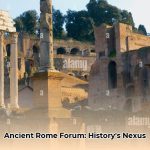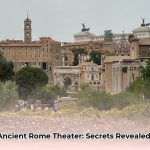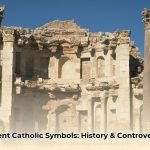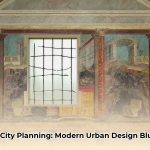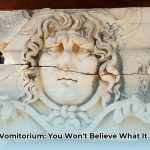Step back in time and prepare to be truly amazed! The temples of ancient Rome stand as magnificent, stone-clad testaments to a civilization that shaped the Western world. These are not merely ancient ruins; they are vibrant storybooks etched in marble and concrete, brimming with tales of formidable rulers, enigmatic deities, and engineering feats that still humble us today. How can we truly connect with these enduring wonders that have defied millennia? This comprehensive guide will transport you through their history, architecture, and lasting impact. See more on this topic at our Ancient Temples Guide.
Discovering Architectural Wonders and Lasting Legacies
The temples of ancient Rome showcase the astonishing engineering prowess and artistic virtuosity of the Roman people, profoundly influencing subsequent eras of art, architecture, and even technological innovation. Built throughout the expansive Roman Republic and Empire, these structures were consecrated to a diverse pantheon of Roman gods and goddesses. Sometimes, they even elegantly integrated religious concepts borrowed from other cultures, reflecting Rome’s expansive reach. From their very foundations, these temples were not just places of worship; they were the beating heart of Roman civic and spiritual life, with public religious rituals often drawing massive crowds.
Must-See Temples: A Journey Through Time
When considering the most pivotal and remarkably preserved temples of ancient Rome, a few stand out, beckoning travelers and scholars alike:
- The Pantheon
- Temple of Portunus
- Temple of Hercules Victor
What singular qualities elevate these particular temples, making them indispensable for any exploration, whether it’s a physical journey or an armchair expedition into antiquity? Let’s delve deeper into their enduring allure, uncovering the secrets of Roman construction techniques, particularly with concrete, which allowed for structures far more ambitious and durable than those preceding them.
The Pantheon: A Sphere of Light and Ingenuity
The Pantheon, located in the heart of Rome, is nothing short of breathtaking—a staggering testament to Roman brilliance. Imagine yourself stepping beneath its colossal dome, watching sunlight pour dramatically through the oculus (the central opening at the top), painting the vast interior with shifting patterns of illumination. It’s an experience that transcends mere sightseeing, connecting you directly with the past while highlighting unparalleled architectural innovation.
- A Bit of History and Significance: Constructed during the reign of Emperor Hadrian around 126 AD, the Pantheon was initially dedicated to all the Roman gods, showcasing Rome’s religious syncretism (the blending of different religious beliefs). Its conversion into a Christian church in the 7th century was instrumental in its exceptional preservation, saving it from the fate of many other pagan structures. It remains a consecrated church to this day.
- Architectural Highlights: The dome itself is an unparalleled marvel of engineering, especially considering it’s made of unreinforced concrete. Measuring 43.3 meters (142 feet) in diameter, it held the record as the world’s largest unsupported dome for over 1,800 years. The weight of the dome is ingeniously reduced by coffers (sunken panels) and by using lighter aggregate materials like pumice in the concrete towards the top. The oculus, a perfect circle 8.2 meters (27 feet) in diameter, allows natural light to flood the interior, creating a mesmerizing interplay of light and shadow, and also serving as the building’s only source of ventilation.
- Planning Your Visit: For those contemplating a physical journey, always verify current opening hours. As a hugely popular destination, it can get crowded. The optimal time to witness the enthralling effect of sunlight through the oculus is typically around midday, especially on a clear day, when the sunbeam dramatically sweeps across the interior.
Temple of Portunus: Honoring the God of Harbors
The Temple of Portunus, nestled within Rome’s Forum Boarium, offers another fantastic example of architectural resilience, having stood the test of time since approximately 120-80 BC. Its remarkable preservation is largely due to its conversion into a church in 872 AD.
- A Bit of History and Significance: This elegant, rectangular temple was dedicated to Portunus, the Roman god of harbors, ports, and rivers, underlining the critical importance of maritime trade and activities in Rome’s religious and economic life. It embodies the architectural finesse of the Roman Republic, reflecting elements from both Italic and Greek traditions.
- Architectural Highlights: Its design features a mix of Greek and Italic styles. While its Ionic columns and robust construction, utilizing local travertine and tufa stone, demonstrate sophisticated Roman building techniques, the temple stands on a high podium with a frontal staircase, a distinctly Italic characteristic. The columns along the sides are engaged (half-columns attached to the wall of the cella), giving the appearance of a peripteral temple (with columns all around) without actually having freestanding columns on all sides, a style known as “pseudoperipteral.”
- Digging Deeper: For researchers keen to explore further, seeking primary source texts detailing the religious ceremonies and rituals associated with Portunus can illuminate the profound significance of this deity in ancient Rome. For photographers, the golden hour offers unparalleled lighting to capture its intricate details against the Roman Forum’s ancient landscape, particularly accentuating the contrast between its stone structure and the surrounding greenery.
Temple of Hercules Victor: A Circular Symphony of Strength
The Temple of Hercules Victor, also situated in Rome’s Forum Boarium near the Tiber River, is one of the city’s oldest standing structures, uniquely distinguished by its circular form. Its survival is largely owed to its conversion into the church of Santa Maria del Sole in the 12th century.
- A Bit of History and Significance: Dating back to the 2nd century BC (around 120 BC), this temple, dedicated to Hercules Victor, showcases Roman admiration for heroism, strength, and courage, integrating Greek heroic figures into Roman religious practices. It is believed to have been commissioned by a wealthy olive oil merchant, underscoring Hercules’ connection with success in commerce.
- Architectural Highlights: Its distinctive circular colonnade, composed of twenty Corinthian columns (originally made of Pentelic marble imported from Greece, highlighting Rome’s vast trade networks), and evident Greek architectural influences (particularly its tholos or circular design) are prominent features. The temple rests on a low, three-step stylobate rather than a high podium, another Greek characteristic, further emphasizing its unique blend of styles. The circular cella (inner chamber) was also constructed from travertine.
- Picture Perfect: For capturing a truly compelling image, try framing the temple with the Roman Forum ruins subtly in the background or from across the Tiber to include the tranquil waters. The striking contrast between the circular temple’s form and the broader archaeological landscape creates a visually stunning photograph, emphasizing its distinctiveness among predominantly rectangular Roman temples.
The Enduring Question of Size: Which Temple Reigned Supreme?
While the Pantheon, the Temple of Portunus, and the Temple of Hercules Victor are celebrated for their preservation and architectural merit, a lively debate persists among scholars regarding which temple truly held the title of “largest” in ancient Rome and the wider Empire. The answer often hinges on the specific criteria used—whether it refers to footprint, height, or sheer volume.
- The Temple of Jupiter Optimus Maximus: Within the city of Rome, the Temple of Jupiter Optimus Maximus on the Capitoline Hill was considered the most important and, for centuries, the largest. Dedicated around 509 BCE, it underwent several reconstructions after fires. Its massive footprint and prominent position symbolized Rome’s power and its unique version of the Capitoline Triad (Jupiter, Juno, Minerva). While only scanty remains are visible today, historical accounts describe its immense scale, though precise dimensions are debated due to its multiple rebuildings.
- The Temple of Jupiter Heliopolitanus (Baalbek): For the largest temple in the entire Roman Empire, the Temple of Jupiter Heliopolitanus at Baalbek (modern-day Lebanon) takes precedence. Part of a vast temple complex, its sheer scale was unparalleled: the main temple measured approximately 88 by 48 meters (289 by 157 feet), surrounded by 54 colossal Corinthian columns, each 19.8 meters (65 feet) high. Only six of these titanic columns still stand, but they offer a profound sense of the temple’s original grandeur and the Roman Empire’s ability to mobilize vast resources for monumental projects abroad.
Different interpretations of historical records and ongoing archaeological discoveries continue to fuel this fascinating discussion, a question historians continually explore. Indeed, ancient records can be notoriously vague, leading to ongoing academic inquiry and the thrilling possibility of new discoveries.
Preserving the Past: Our Collective Responsibility
How do we ensure that this incredible historical tapestry is preserved, not just for us, but for countless future generations? It demands a concerted effort from various stakeholders:
| Who’s Involved | What They Can Do |
|---|---|
| Historians and Archaeologists | Continuously investigate lesser-known temples to build a more comprehensive understanding of Roman religious and daily life. Develop immersive digital reconstructions of temples for educational outreach and virtual exploration, incorporating precise measurements and material analyses from current findings. |
| Conservation Scientists | Implement cutting-edge preservation techniques to protect ancient materials from environmental degradation and human impact. Conduct ongoing structural analyses to monitor stability and prevent collapse, ensuring the longevity of these invaluable structures. |
| Tourism Professionals | Design compelling and accessible tours specifically highlighting these ancient temples and their profound historical, architectural, and cultural contexts. Prioritize investments in the sustainable preservation of temple ruins, ensuring minimal impact while maximizing appreciation for future generations. |
| Teachers and Education Experts | Integrate these remarkable temples as compelling case studies in classroom curricula, providing downloadable lesson plans and interactive digital resources. Encourage students to participate in interdisciplinary projects that creatively combine history, art, and architectural study, fostering a love for antiquity. |
The temples of ancient Rome are far more than mere antiquated structures; they are powerful portals to a captivating past. By engaging with them, we can forge a deeper understanding of Roman civilization and its unparalleled, enduring legacy. So, whether you’re meticulously planning a visit to Rome or simply journeying through history from the comfort of your home, dedicate time to appreciate these incredible testaments to human ingenuity and the profound influence of classical antiquity. Consider continuing your archaeological journey to uncover more about these Roman temples.
How Were Roman Temples Built? The Echoes of Etruria and Greece
Have you ever pondered the intricate processes behind how Roman temples were built? The narrative of their construction begins with profound architectural influences. Imagine Roman architects, keen observers of their predecessors, borrowing extensively from the Etruscans and Greeks. Yet, these were no mere copies. Romans adeptly adapted these foundational styles, forging something uniquely their own – structures that served as both sacred houses of worship and potent declarations of Roman identity. This evolution marks a significant phase in architectural history.
Influences and Innovations
Roman temple architecture drew heavily from two major sources:
- Etruscan Influence: From the Etruscans, Romans adopted the concept of a temple on a high podium, typically accessed by a single, monumental staircase at the front. This gave Roman temples a strong frontal emphasis, contrasting with the Greek approach of temples accessible from all sides. The deep portico (porch) also derived from Etruscan models.
- Greek Influence: The Greeks provided the aesthetic vocabulary of the classical orders:
- Doric: Sturdy, unadorned columns with simple capitals.
- Ionic: More slender columns with volutes (scrolls) on their capitals.
- Corinthian: The most ornate, featuring acanthus leaves and intricate designs on their capitals. Romans favored the Corinthian order for its grandeur, which perfectly suited their imperial ambitions.
The Greek peripteral design (columns surrounding the entire cella) was often adapted by Romans into pseudoperipteral (engaged columns on the sides and rear).
However, Roman genius lay in their innovations:
- Concrete (Opus Caementicium): This revolutionary material, a mixture of aggregate (like volcanic rock or brick rubble), pozzolana cement, and water, allowed Romans to build far more quickly, economically, and on a much larger scale than ever before. It could be poured into molds, enabling complex shapes like domes and vaults that were impossible with traditional cut stone.
- Arches and Vaults: While not invented by the Romans, they perfected the use of the arch, barrel vault, and groin vault, distributing weight effectively and allowing for massive, open interior spaces, culminating in spectacular domes like the Pantheon’s.
- Materials: Beyond concrete, Romans extensively used durable local stones like tufa and travertine, often faced with imported, opulent marble (from places like Pentelikon in Greece or Carrara in Italy) for aesthetic appeal.
To the Gods and Emperors: Purpose and Dedication
Temples in ancient Rome were not confined to the worship of a single deity. A vast pantheon of gods and goddesses received their divine recognition within these hallowed spaces, each temple typically dedicated to a specific god, goddess, or group (like the Capitoline Triad). And it wasn’t exclusively divine figures; the Imperial Cult, the formal reverence of Roman emperors (often deified after death), also found its sacred home within these grand edifices. These temples were the pivotal centers for religious practice, profoundly shaping the spiritual landscape of the Roman world, with public religious rituals, sacrifices, and festivals often occurring within or directly outside temple precincts. This demonstrates their fundamental role in Roman civic identity and state religion.
The Fascination with the Facade
When you conjure an image of a Roman temple, what immediately comes to mind? Likely, it’s the commanding front! This visual emphasis was entirely intentional. Roman temple design placed immense importance on the front façade. Rows of stately columns, impressive grand staircases, and intricately adorned pediments (the triangular gables above the columns, often filled with sculpture) were ubiquitous features. In contrast, the sides and rear were often less elaborate, sometimes even skillfully integrated into adjacent urban structures or party walls. This deliberate focus on the front, meant to be viewed head-on by approaching worshippers or citizens, remains a defining characteristic of Roman temple architecture, distinguishing it from the all-around Greek design.
Surviving Across the Ages: Conversion and Continuity
Consider these magnificent buildings, standing resiliently for centuries. Many endured due to a fascinating yet pragmatic phenomenon: conversion. Numerous Roman temples were pragmatically transformed into Christian churches or, less commonly, mosques, particularly from the 6th century AD onwards, following the official adoption of Christianity as the state religion and the subsequent suppression of paganism. This act of repurposing became an inadvertent, yet remarkably effective, strategy for preserving these ancient structures, allowing us to marvel at their ingenuity today. This adaptive reuse demonstrates a significant continuity in urban planning and cultural heritage, where practical considerations often outweighed ideological destruction.
A Lasting Architectural Legacy: From Rome to the World
Have you ever noticed striking echoes of Roman temple design in contemporary buildings? A closer look reveals undeniable influence. Neoclassical architecture, in particular, owes an enormous debt to the Roman temple. That iconic temple front—with its elegant columns and prominent pediment—has transcended its origins, becoming a global symbol of grandeur, authority, and classical proportionality. Think of the dignified appearance of the White House, the British Museum, or your local courthouse; these very likely derive directly from this enduring Roman legacy, embodying principles of order, symmetry, and monumentality. Roman architectural advancements, particularly in concrete and vaulting, also laid the foundation for Gothic architecture and much of modern engineering.
Pantheon Versus Parthenon: A Classical Comparison
Roman temples! Are they not utterly captivating in their diversity and historical depth? Let’s consider a few of the most iconic, beginning with two giants whose names often cause confusion: the Parthenon and the Pantheon. While their names share a superficial similarity, their histories, purposes, and engineering marvels diverge dramatically. Understanding these differences illuminates the distinct achievements of Greek and Roman civilizations.
The Majestic Parthenon: Athenian Power Embodied
Transport yourself to ancient Athens, 5th century BCE (completed 438 BCE). The Parthenon stands majestically atop the Acropolis, a resounding declaration of Greek victory over the Persians and a symbol of Athenian democratic ideals and artistic prowess. This isn’t merely a building; it embodies a profound symbol of classical Greek perfection. Dedicated to Athena Parthenos, Athens’s patron goddess, its harmonious Doric columns (with subtle entasis, or swelling, to appear perfectly straight from a distance) and exquisite sculptures (like the intricate frieze) perfectly embody classical Greek ideals of proportion and beauty. Inside, a colossal gold and ivory statue of Athena captured the attention of all, vividly demonstrating Athens’s immense wealth and profound civic devotion. This magnificent temple later became a Christian church, then an Ottoman mosque, before suffering significant damage during a 17th-century battle. Today, it functions primarily as a museum and a revered UNESCO World Heritage site, inviting visitors to connect with its compelling past and admire its enduring architectural brilliance.
The Roman Pantheon: A Marvel of Concrete Engineering
Now, shift your focus to Rome during Emperor Hadrian’s reign in the 2nd century CE (completed c. 126 CE). The Pantheon! It represents the pinnacle of Roman ingenuity and architectural innovation, a testament to the Empire’s engineering might. Originally consecrated as a temple to all Roman gods (“Pan” meaning “all,” “theon” meaning “gods”), its immense concrete dome—the largest unreinforced concrete dome for centuries—illustrates the Empire’s unparalleled mastery of construction techniques and materials. Can you imagine the interior, once adorned with richly colored marble sourced from every corner of the Roman world? This opulent decoration vividly demonstrated Rome’s vast economic reach, pervasive influence, and connection to its conquered territories. Transformed into a Christian church in the 7th century, a conversion that significantly aided its structural preservation, it continues to function as a church today, making it the best-preserved building from ancient Rome and allowing all to experience its architectural grandeur and profound historical significance firsthand.
Parthenon Versus Pantheon: A Deeper Dive into Classical Giants
While both temples feature compelling classical design elements and share fascinating historical transformations, they possess distinct cultural and religious contexts. The Parthenon magnificently embodies Athenian democracy, a dedication to a single patron goddess, and the pursuit of ideal aesthetic forms through cut stone. In contrast, the Pantheon powerfully showcases Roman imperial might, engineering innovation through concrete, and the syncretic nature of Roman religion, bringing together diverse beliefs under a universal dome. Are they not both lasting, awe-inspiring testaments to human ingenuity and artistic achievements that continue to inspire architects and historians alike?
| Feature | Parthenon | Pantheon |
|---|---|---|
| Location | Athens, Greece | Rome, Italy |
| Primary Period | Classical Greek (5th Century BCE) | Roman Imperial (2nd Century CE) |
| Dedication | Athena Parthenos | All Roman Gods (later Christian Church) |
| Core Material | Pentelic Marble | Unreinforced Concrete (faced with brick and marble) |
| Distinguishing Feature | Rectilinear form, external Doric colonnade, sculptural frieze | Massive concrete dome with central oculus, cylindrical rotunda, frontal portico |
| Architectural Focus | External perfection, optical refinements | Internal space, innovative use of light and structure |
| Symbolism | Athenian power, Greek ideals of beauty and democracy | Roman imperial power, engineering prowess, religious universalism |
| Current Status | Monumental ruin, museum, UNESCO World Heritage Site | Actively functioning church, major tourist attraction, best-preserved ancient Roman building |
Both structures continue to welcome visitors from around the globe, inviting profound reflection on the rich legacies of ancient Greece and Rome. So, which monumental temple truly calls to you? Is it the Parthenon, a formidable symbol of Athenian power, or the Pantheon, a breathtaking testament to Roman engineering brilliance? Either way, prepare to be wonderfully transported through time. Learn more


